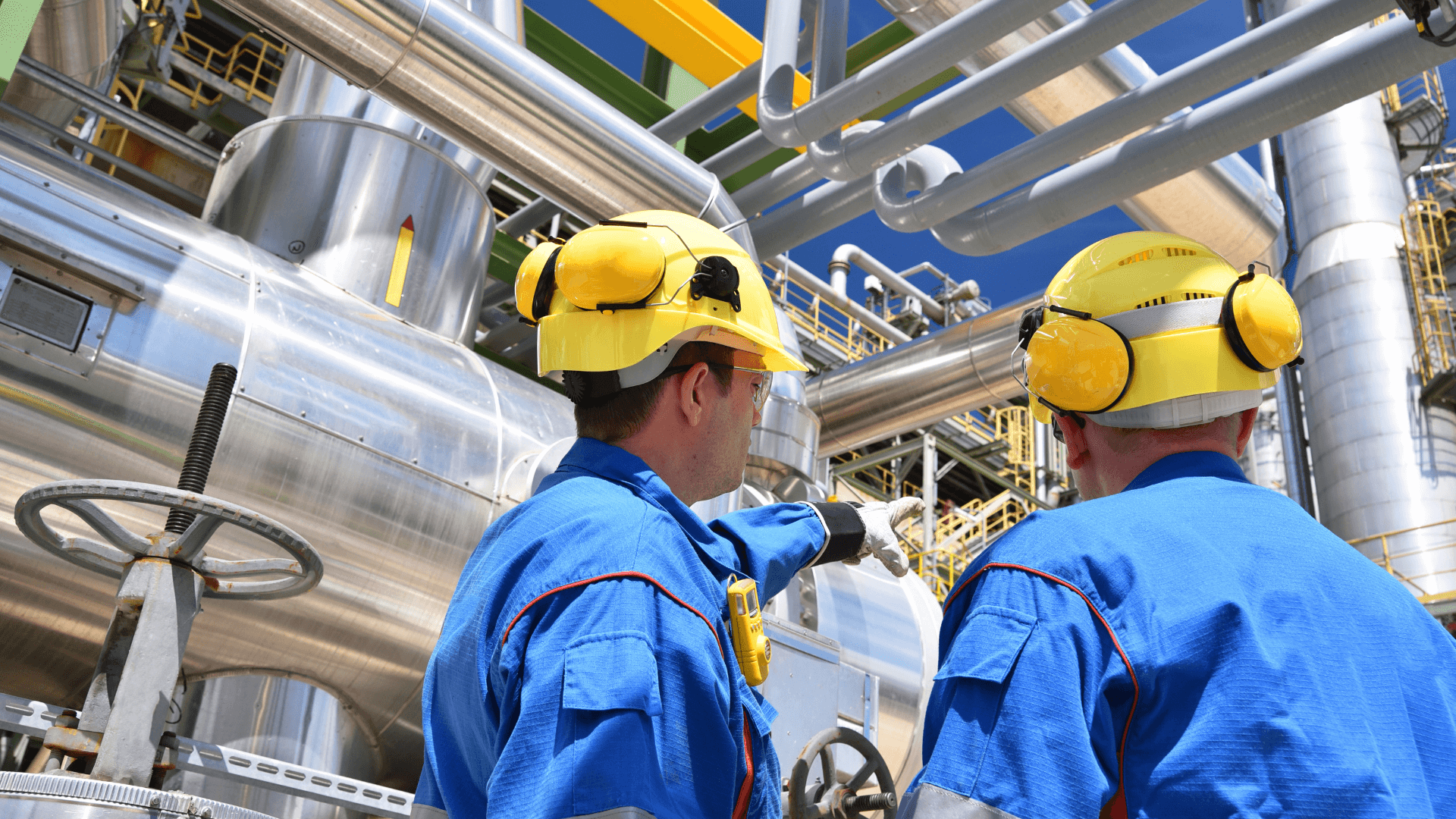Imagine a world where every oil and gas operation prioritizes the safety of their employees and the environment. A world where major accidents and catastrophic failures are minimized through a culture of process safety. It’s not just a dream—it’s an essential goal for the industry.
In this article, we will delve into the best practices for building a culture of process safety in the oil and gas industry. We’ll explore the key elements of a process safety management system and discuss how organizations can implement and maintain it effectively. From risk mitigation strategies to the importance of personal safety equipment, we’ll cover it all.
Why is process safety so crucial in this industry? Well, the high-risk activities, hazardous substances, and complex processes involved demand a higher degree of risk management. Implementing process safety measures not only protects personnel but also safeguards the environment and prevents major incidents that can irreparably damage a company’s reputation.
Introduction to Process Safety Management
Process safety management is of utmost importance in the oil and gas industry as it plays a crucial role in preventing major accidents and ensuring the well-being of personnel and the environment. It encompasses a set of principles, practices, and controls aimed at identifying and mitigating potential hazards associated with the processes involved in oil and gas operations.
The oil and gas industry involves high-risk activities, such as extraction, refining, and transportation of hazardous substances. A process safety event can result in catastrophic failures, unplanned releases of hazardous materials, or even major incidents that may pose a threat to human life and the surrounding environment.
The primary goal of process safety management is to establish robust systems that minimize the risk of accidents and maintain a safe working environment. It focuses on preventing incidents by implementing effective safeguards, following industry standards, and fostering a culture of safety.
By adopting a comprehensive approach to process safety, organizations can ensure the satisfactory protection of their personnel, facilities, and the communities in which they operate. This involves promoting awareness, providing necessary resources, conducting thorough risk assessments, and implementing appropriate control measures.
In the following sections, we will delve deeper into the key elements and best practices for effective process safety management in the oil and gas industry. We will explore hazard analysis, safe design and operational considerations, leadership commitment, risk mitigation strategies, and the tools and resources available to support the evaluation and improvement of process safety.
Key Elements of Process Safety Management
Process safety management is a comprehensive approach to ensuring the safety of personnel, the environment, and surrounding communities in the oil and gas industry. It involves the implementation of various systems, procedures, and best practices aimed at preventing major accidents and mitigating potential risks. To establish an effective process safety management system, several key elements need to be considered:
1. Process Safety Leadership
Effective process safety management starts at the top with strong leadership commitment. Leaders must establish a culture that prioritizes safety, provides resources for implementation, and actively engages employees in safety initiatives. This includes setting clear expectations, promoting open communication, and fostering a proactive approach to identifying and addressing hazards.
2. Process Knowledge and Understanding
A thorough understanding of the processes, technologies, and equipment used in oil and gas operations is crucial for managing process safety. This includes knowledge of chemical engineering principles, safe operating limits, and potential hazards associated with specific procedures. Ongoing training and education help to enhance the expertise of personnel responsible for process safety management.
3. Hazard Identification and Risk Assessment
Conducting regular hazard identification and risk assessments is essential for identifying potential hazards and evaluating their associated risks. This involves systematically analyzing the process, identifying potential scenarios, and assessing the likelihood and consequences of incidents. The findings from these assessments can then be used to prioritize risk reduction efforts.
4. Operating Procedures and Safe Work Practices
Clear and well-defined operating procedures are crucial for ensuring safe and consistent operations. These procedures should provide step-by-step instructions for carrying out tasks, highlight potential hazards, and specify required safety precautions. Safe work practices, such as the use of personal protective equipment (PPE) and adherence to established safety protocols, further enhance process safety.
5. Employee Training and Competency
Ensuring that all employees have the necessary knowledge and skills to perform their tasks safely is vital for maintaining process safety. Trade-specific training programs, ongoing competency assessments, and continuous learning opportunities help to enhance employee capabilities and promote a culture of safety awareness.
6. Management of Change
Any modifications or changes to processes, equipment, or procedures should undergo a robust management of change process. This involves evaluating potential impacts on process safety, conducting hazard assessments, and engaging relevant stakeholders to ensure that any modifications are implemented safely.
7. Incident Investigation and Learning
When incidents occur, it is crucial to conduct thorough investigations to determine root causes and identify opportunities for improvement. Lessons learned from these investigations should be shared throughout the organization to prevent similar incidents from recurring and improve overall process safety performance.
By focusing on these key elements of process safety management, organizations in the oil and gas industry can create a safer work environment, minimize the risks of major accidents, and protect personnel, the environment, and surrounding communities.
Hazard Analysis and Risk Assessment
Hazard analysis and risk assessment are essential components of a robust process safety management system in the oil and gas industry. These practices play a crucial role in identifying potential hazards, evaluating associated risks, and implementing appropriate control measures to prevent accidents and protect personnel, the environment, and assets.
Conducting a thorough hazard analysis involves systematically identifying hazards and potential failure scenarios within the operational processes. It requires a comprehensive understanding of the processes, equipment, and materials involved, as well as the potential consequences of failures or deviations.
Risk assessment, on the other hand, involves quantifying the likelihood and severity of identified hazards, enabling organizations to prioritize their focus on critical areas. This assessment considers factors such as the frequency of potential incidents, the consequences that may arise, and the effectiveness of existing control measures.
The significance of hazard analysis and risk assessment lies in their ability to guide organizations in implementing effective risk mitigation strategies. By identifying potential risks, organizations can proactively establish preventive measures, implement safeguards, and develop emergency response plans. Through this comprehensive approach, the likelihood and severity of accidents can be significantly reduced.
It is important to note that hazard analysis and risk assessment are not one-time activities. They should be considered ongoing processes, routinely reviewed and updated as new information becomes available or as operational conditions change. Continuous monitoring and assessment of potential hazards are vital to ensure the effectiveness and relevance of implemented control measures.
Safe Design and Operations Consideration
In the oil and gas industry, incorporating safe design and operational practices is crucial for minimizing hazards and ensuring process safety. By implementing effective measures, companies can reduce the risk of accidents, protect personnel and the environment, and maintain the integrity of their operations.
Process Safety in Design
Designing oil and gas facilities with process safety in mind is essential. This involves considering potential hazards, such as fire, explosion, and chemical releases, and incorporating measures to prevent and control these risks. Some key aspects of safe design include:
1. Facility Layout: Properly planning the layout of the facility can minimize the potential for accidents. Separating hazardous equipment and storage areas from occupied spaces, ensuring sufficient ventilation, and providing adequate emergency access are important considerations.
2. Engineering Controls: Incorporating engineering controls, such as pressure relief systems, safety interlocks, and automated shutdown systems, helps mitigate risks. These systems ensure that processes operate within safe parameters and can prevent incidents from escalating.
3. Materials Selection: Choosing suitable materials that can withstand the intended operating conditions is crucial. Compatibility with process fluids, resistance to corrosion, and adherence to industry standards are factors to consider when selecting materials for equipment and pipelines.
Operational Practices for Process Safety
In addition to safe design, adopting proper operational practices is vital for maintaining process safety throughout the lifecycle of oil and gas operations. This includes:
1. Procedures and Training: Establishing clear procedures and providing comprehensive training are essential for ensuring that personnel understand and follow safe operating practices. Regular refresher training and ongoing communication about process safety issues are also important.
2. Maintenance and Inspection: Regular maintenance of equipment and regular inspections of critical components and systems can help identify potential defects or issues that could compromise process safety. Implementing preventive maintenance programs and adhering to inspection schedules are important for early detection and mitigation of risks.
3. Management of Change: Implementing effective management of change procedures is crucial when modifications are made to processes, equipment, or procedures. This ensures that potential risks associated with changes are identified, evaluated, and managed appropriately.
By incorporating safe design principles and implementing robust operational practices, oil and gas companies can minimize hazards, prevent accidents, and promote a culture of process safety. Adhering to industry standards and best practices, continuously evaluating and improving safety measures, and fostering a strong safety culture are key steps toward achieving and maintaining process safety in the industry.
Approach to Process Safety
Implementing process safety measures in the oil and gas industry is crucial to prevent major accidents and ensure the well-being of personnel and the environment. The following approach outlines recommended strategies for effectively implementing process safety in this industry:
1. Establish a Robust Safety Management System
– Develop a comprehensive safety management system that incorporates process safety elements.
– Clearly define roles and responsibilities for process safety and ensure management buy-in.
2. Conduct Risk Assessments Regularly
– Identify and evaluate potential hazards and risks associated with each process.
– Prioritize and mitigate high-risk areas using appropriate controls and safeguards.
3. Emphasize Continuous Training and Education
– Provide thorough training to all employees regarding process safety best practices.
– Promote an organizational culture that values safety and encourages continuous learning.
4. Implement Effective Process Controls
– Install fail-safe mechanisms, emergency shutdown systems, and alarms to mitigate process deviations.
– Regularly monitor and maintain critical process parameters to minimize risks.
5. Ensure Compliance with Industry Standards and Regulations
– Stay updated with relevant regulations and standards, such as those provided by the International Association of Oil and Gas Producers (IOGP).
– Regularly audit operations to ensure compliance with these requirements.
6. Foster Open Communication and Reporting
– Encourage employees to report near misses, incidents, and safety concerns without fear of reprisal.
– Establish a clear reporting system and investigate all reported incidents to identify root causes and implement preventive measures.
7. Continuously Review and Improve Process Safety Performance
– Regularly analyze process safety data and metrics to identify areas for improvement.
– Implement effective corrective and preventive actions based on these findings.
By following these recommended approaches and strategies, organizations can enhance process safety and reduce the likelihood of major accidents in the oil and gas industry. Remember, process safety is an ongoing effort that requires strong leadership commitment and a dedicated focus on continuous improvement.
Commitment to Process Safety
Leadership commitment and fostering a strong safety culture are essential components in ensuring process safety in the oil and gas industry. By prioritizing and actively demonstrating a commitment to safety, leaders set the tone for the entire organization and create an environment where safety is valued and ingrained in every aspect of operations.
Importance of Leadership Commitment
Leadership commitment is crucial because it establishes the foundation for a robust process safety management system. When leaders prioritize safety and visibly demonstrate their commitment, it sends a clear message to employees that their well-being is paramount. This commitment includes allocating necessary resources, establishing clear safety goals, and actively participating in safety initiatives.
A strong safety culture starts at the top, with leaders actively promoting and endorsing safe practices. They should communicate the importance of process safety to all employees, making it a shared responsibility and empowering individuals to actively contribute to safety initiatives.
Building a Strong Safety Culture
Building a strong safety culture requires more than just issuing policies and procedures. It involves fostering an environment where open communication, continuous learning, and proactive safety measures are encouraged.
Leaders should encourage and support training and development opportunities for employees to enhance their knowledge and skills related to process safety. Regular safety meetings, toolbox talks, and safety performance reviews can also strengthen the safety culture within the organization.
Leading by Example
Leaders must lead by example and adhere to the same safety standards expected of their employees. By actively practicing safe behaviors and consistently following safety protocols, leaders reinforce a culture of safety and inspire others to do the same.
Emphasizing accountability is also essential. When incidents or near-misses occur, leaders should take prompt and appropriate action to investigate and address the underlying causes. By holding individuals accountable for their actions and promoting a blame-free reporting culture, leaders create an environment where lessons learned from incidents contribute to continuous improvement.
Risk Mitigation Strategies
Implementing effective risk mitigation strategies is crucial for ensuring process safety in oil and gas operations. By proactively identifying and managing potential risks, organizations can minimize the likelihood of accidents and protect the well-being of their personnel and the environment. Here are some practical risk mitigation strategies and best practices that can be adopted:
1. Robust Hazard Identification and Assessment:
– Conduct thorough hazard identification and risk assessment processes to identify potential hazards and assess their severity and likelihood of occurrence.
– Utilize various techniques such as HAZOP (Hazard and Operability Study), FMEA (Failure Mode and Effects Analysis), and bowtie analysis to analyze and prioritize risks.
2. Effective Risk Communication and Training:
– Establish clear communication channels to ensure effective dissemination of safety-related information at all levels of the organization.
– Provide comprehensive training programs to employees on process safety procedures, emergency response protocols, and proper use of personal protective equipment (PPE).
3. Strong Operating Procedures and Controls:
– Develop and enforce standardized operating procedures that outline safe practices and protocols for handling hazardous substances and equipment.
– Implement robust control measures, including engineering controls, administrative controls, and personal protective equipment, to minimize risks associated with high-risk activities.
4. Continuous Monitoring and Auditing:
– Regularly monitor and assess the implementation of process safety measures to identify any gaps or non-compliance.
– Conduct internal audits and inspections to ensure adherence to established safety protocols and identify opportunities for improvement.
5. Emergency Preparedness and Response:
– Develop and regularly review emergency response plans to effectively respond to incidents and minimize their impact.
– Conduct drills and training exercises to prepare personnel for emergency scenarios and evaluate the effectiveness of response procedures.
6. Learn from Incidents:
– Establish a robust incident reporting and investigation process to identify the root causes of incidents and implement corrective actions.
– Share lessons learned from past incidents across the organization to prevent similar occurrences in the future.
7. Collaboration and Best Practice Sharing:
– Foster a collaborative approach by engaging industry experts, regulatory bodies, and industry associations to share best practices and learn from each other’s experiences.
– Stay updated with the latest technological advancements and industry trends to adopt innovative solutions for enhancing process safety.
By implementing these risk mitigation strategies and following best practices, organizations in the oil and gas industry can establish a strong culture of process safety and minimize the likelihood of major accidents. Remember, process safety is an ongoing effort that requires continuous improvement and a proactive approach to ensure the well-being of all stakeholders involved.
Tools and Resources for Process Safety
Implementing process safety measures in the oil and gas industry requires access to valuable tools, resources, and industry guidelines that can support the evaluation and improvement of process safety. Here are some key resources to help you enhance your process safety management system:
1. International Association of Oil & Gas Producers (IOGP): IOGP provides industry-wide guidelines and best practices for process safety in the oil and gas sector. Their publications cover various aspects of process safety, including hazard identification, risk assessment, and emergency response planning.
2. Occupational Safety and Health Administration (OSHA): OSHA offers comprehensive guidelines and regulations related to process safety management. Their website is a valuable resource for accessing information on process safety standards, training programs, and relevant publications.
3. American Institute of Chemical Engineers (AIChE): AIChE provides a range of resources to support process safety, including technical publications, conferences, and training courses. Their Center for Chemical Process Safety (CCPS) offers guidelines and books covering multiple aspects of process safety management.
4. Process Safety Management Software: Utilizing process safety management software can enhance your organization’s efficiency in managing critical process safety elements such as hazard analysis, risk assessment, and incident reporting. These software tools provide a centralized platform for tracking and managing process safety data.
5. Industry Peer Networks: Engage with industry associations, professional networks, and forums to gain insights from peers and experts in the field. Participating in conferences, webinars, and workshops can provide valuable networking opportunities and access to the latest advancements in process safety.
Conclusion
Process safety is of paramount importance in the oil and gas industry to prevent major accidents and ensure the well-being of personnel and the environment. By implementing effective process safety management systems, organizations can mitigate risks, protect lives, and safeguard valuable assets.
Throughout this article, we have explored the key elements and best practices for ensuring process safety in oil and gas operations. Here are the key takeaways:
1. Commitment and Leadership: Leadership commitment is crucial in creating a strong safety culture and driving process safety initiatives. It sets the tone for the entire organization and emphasizes the importance of safety as a core value.
2. Risk Mitigation Strategies: Implementing risk mitigation strategies is essential for identifying and minimizing hazards. This includes conducting thorough hazard analysis and risk assessments, implementing safe design and operational practices, and ensuring the use of appropriate personal protective equipment.
3. Continuous Improvement: Process safety is a continuous journey. It requires regular evaluation, monitoring, and improvement of safety processes to adapt to changing conditions and emerging risks.
4. Training and Knowledge: Developing a knowledgeable workforce through trade-specific training and equipping employees with the necessary skills and knowledge of chemical engineering principles is vital for ensuring a culture of safety and promoting effective risk management.
5. Collaborative Effort: Process safety is a team effort that involves individuals at all levels of the organization. It requires collaboration, communication, and shared responsibility to address potential risks and maintain a safe working environment.














